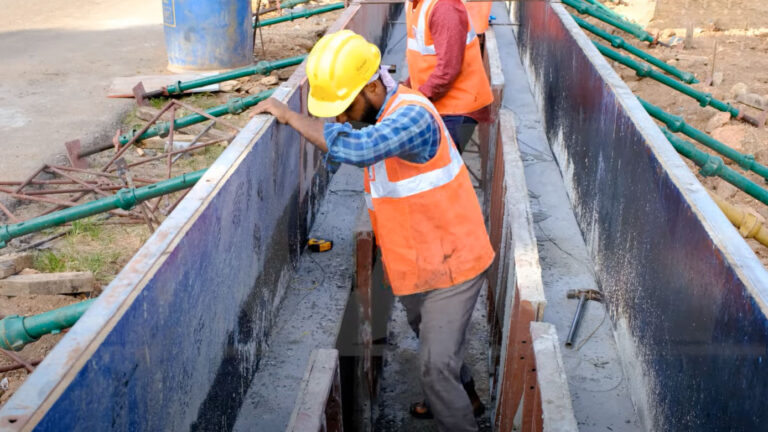As the demand for green construction grows, the industry faces a critical decision: continue using traditional building materials or embrace newer, eco-friendly alternatives like recycled plastic sheets. This shift offers more than just an environmental benefit; recycled plastic sheets bring durability, adaptability, and a practical solution to issues faced with conventional materials.
Limitations of Traditional Materials
Traditional building materials, such as plywood and concrete, have long been the industry standard but come with limitations. Wood, for example, is susceptible to moisture, pests, and warping over time. Plywood used in shuttering can swell, crack, or delaminate after several uses, reducing its longevity and increasing replacement costs. Concrete, while resilient, is energy-intensive to produce and less adaptable to design requirements without extensive formwork or support.
With these limitations in mind, there’s a growing need for durable, sustainable, and cost-effective materials in the long run.
Benefits of Recycled Plastic Sheets
1. Longevity and Reusability
Recycled plastic sheets, such as those used in plastic shuttering, are engineered to last far longer than their traditional counterparts. While plywood may endure 10-15 uses, quality recycled plastic sheets, like WoWBoards, can be reused over 50 times, providing significant cost savings over time. This reusability reduces the need for frequent replacements and minimises waste, adding value to projects that aim for economic and environmental sustainability.
2. Resistance to Environmental Stressors
Unlike wood or other biodegradable materials, recycled plastic sheets are highly resistant to environmental factors such as moisture, extreme temperatures, and pests. This makes them suitable for various conditions, especially in humid or coastal regions where traditional materials can deteriorate quickly. These sheets maintain their structural integrity and appearance by reducing wear vulnerability, proving ideal for long-term construction applications.
3. Flexibility and Adaptability
Recycled plastic sheets offer slight flexibility, allowing architects and contractors to explore versatile design possibilities without compromising strength. Unlike concrete, which requires heavy formwork, recycled plastic is lightweight yet strong, making it easier to handle on-site and adaptable for various applications, from formwork to interior panelling.
4. Environmental Benefits
Using recycled plastic sheets directly supports waste reduction efforts by diverting plastic waste from landfills and repurposing it into functional building materials. Every sheet used contributes to a circular economy, which conserves resources and helps reduce pollution.
Case Studies and Real-Life Examples
Plastic Roads and Infrastructure Projects
Across India, innovative applications of recycled plastic are gaining momentum. Municipalities are collaborating with private enterprises to incorporate recycled plastic into road construction. This approach enhances road durability and offers a sustainable outlet for the country’s plastic waste.
Brigade Project: WoWBoards in Action
Using WoWBoards for slab de-shuttering at the Brigade project demonstrated the advantages of recycled plastic sheets. Unlike plywood, which often sticks or swells, WoWBoards provides a smooth de-shuttering experience, saving time and reducing maintenance on-site. The high reusability and resistance to weather conditions proved beneficial for both sustainability and cost-effectiveness.
Conclusion
Recycled plastic sheets are proving to be an eco-friendly alternative and a superior option to traditional materials in many respects. Their longevity, resistance to environmental wear, flexibility, and environmental impact offer distinct advantages that align with modern construction needs. As the industry continues to evolve towards sustainable practices, using recycled plastic sheets exemplifies how innovative materials can meet the dual demands of economic efficiency and environmental responsibility.
Transitioning to these solutions not only helps future-proof the construction industry but also moves us closer to a sustainable and resilient future.

